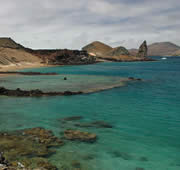World Heritage: A convention at a crossroads
As the 33rd meeting of the World Heritage Committee approaches, we take stock of the challenge that lies at the heart of the World Heritage Convention.

Photo: IUCN Photo Library © Imène Meliane
“World Heritage Site”: the best known brand for the most important global conservation areas. Some 878 locations are recognised as World Heritage Sites. Of these, 199 are included for their natural values, including 180 million hectares of prime conservation land.
This includes some of conservation’s ‘household names’, such as the Serengeti, Galapagos Islands, Grand Canyon and Great Barrier Reef. World Heritage Sites cover an impressive 8 percent of the total area of all of the worlds protected areas, providing a significant, front-line response to the global extinction crisis.
With increasing global reach, public recognition and membership of most of UNESCO’s member states, the World Heritage Convention can claim significant conservation successes over the 35 years since its establishment.
But is it still up to the job of conserving sites in the 21st Century? There are a series of concerns. Enormous energy is expended during the nomination process, however much less when it comes to actual management of the property. A significant number of World Heritage Sites are not effectively managed, and an increasing number of sites show a loss of values for which they were originally listed.
New global threats to biodiversity, including climate change and invasive species have the potential to exacerbate existing conservation and management issues. The benefits and impacts of World Heritage are not fully recognized, and many communities do not benefit enough from their designation. Field managers are often frustrated by the fact that World Heritage status increases public visitation and management needs but does not necessarily increase revenues needed to manage increases in tourism.
IUCN believes the Convention is reaching a “tipping point” where the focus of effort needs to shift decisively away from a preoccupation with listing new sites, to focus more on maintaining the values of sites that have been listed. The World Heritage Convention has the potential to directly conserve perhaps 10 per cent by area of all of the world’s protected areas and, through this, to also provide example sites that can positively influence the remainder.
To realise this potential much more ground level support is needed to ensure sites really are protected, to support site managers and communities to manage them effectively, and to realise benefits, including income from sustainable tourism.
How to achieve this change of emphasis is a key challenge for the World Heritage Committee, and there are solutions on offer and willing expertise and effort available. Can we make the World Heritage Convention the engine for conserving the world’s most important biodiversity areas for future generations? Where do you stand on whether this challenge is achievable? What do you think needs to happen?



